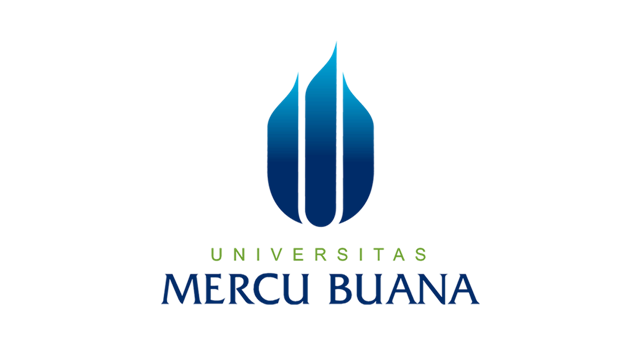Effect of Water Hyacinth Fiber Length and Content on the Torsional Strength of Epoxy Resin Composites
Abstract
This study investigates the influence of water hyacinth fiber length and content on the torsional strength of epoxy resin composites. Utilizing an experimental design, specimens were prepared with varying fiber lengths (10 mm, 20 mm, 25 mm, and 135 mm) and content percentages (4%, 7%, and 10%) and subjected to torsional testing according to ASTM E-143 standards. The primary objective was to determine the optimal fiber configurations that enhance the composite's mechanical properties, particularly its resistance to torsional stress. Results indicated that shorter fiber lengths consistently yielded higher torsional strength, with the 20 mm fibers at a 7% content displaying the highest torque resistance, achieving a maximum of 1.418 Nm and a shear stress of 29.348 MPa. In contrast, longer fibers generally showed diminished performance, likely due to poorer resin penetration and fiber-matrix bonding. Regression analysis was employed to develop predictive models for the torsional behavior based on fiber dimensions and compositions, achieving high accuracy with coefficients of determination (R²) ranging from 0.95 to 1.00, suggesting excellent model fits. These findings underscore the potential of using water hyacinth fibers as effective reinforcement in epoxy composites, particularly at optimal lengths and concentrations. The study contributes to the broader utilization of natural fibers in composites, offering a sustainable alternative to synthetic fibers with beneficial mechanical properties and environmental impacts.
Keywords
Full Text:
PDFReferences
A. P. A. Prasetyaningrum, N. Rokhati, N. Rokhati, and A. K. Anik Kristi, “Optimasi proses pembuatan serat eceng gondok untuk menghasilkan komposit serat dengan kualitas fisik dan mekanik yang tinggi,” Riptek, vol. 3, no. 1, pp. 45–50, 2009.
S. Sulardjaka, S. Nugroho, and R. Ismail, “Peningkatan kekuatan sifat mekanis komposit serat alam menggunakan serat enceng gondok (tinjauan pustaka),” Teknik, vol. 41, no. 1, pp. 27–39, 2020, doi: 10.14710/teknik.v41i1.23473.
A. Ajithram, J. T. W. Jappes, M. A. Khan, and N. C. Brintha, “Evaluation of mechanical properties and thermal characteristics of aquatic waste water hyacinth (Eichhornia Crassipes) plant into natural powder and ash reinforced polymer composites for lightweight applications,” Proc. Inst. Mech. Eng. Part C J. Mech. Eng. Sci., vol. 236, no. 7, pp. 3546–3557, 2022, doi: 10.1177/09544062211038982.
A. Ajithram, J. T. W. Jappes, S. Irulappasamy, and N. C. Brintha, “Influence of extraction methods on mechanical, absorption and morphological properties of water hyacinth (Eichhornia Crassipes) natural fibre composites: Environmental threat to successive commercial products,” Proc. Inst. Mech. Eng. Part L J. Mater. Des. Appl., vol. 236, no. 8, pp. 1614–1622, 2022, doi: 10.1177/14644207221075894.
B. Q. I. Hanifi, H. Purwanto, and I. Syafa’at, “Pengaruh variasi susunan serat eceng gondok (Eichhornia Crassipes) dengan resin polyester sebagai bahan komposit alternatif rompi anti peluru,” Momentum, vol. 16, no. 2, pp.140-143, 2020, doi: 10.36499/mim.v16i2.3769.
R. Verdian and R. B. Muin, “The effect of variation in the length of water hyacinth fiber twisted on split tensile strength high performance fiber concrete,” Astonjadro, vol. 12, no. 2, pp. 546–557, 2023, doi: 10.32832/astonjadro.v12i2.9346.
H. T. Nguyen and T. B. H. Nguyen, “Treatment of water hyacinth fibers to improve mechanical and microstructural properties of green composite materials,” Nano Hybrids Compos., vol. 35, pp. 111–122, 2022, doi: 10.4028/p-30xboe.
A. Bagir and G. E. Pradana, “Pemanfaatan serat eceng gondok sebagai bahan baku pembuatan komposit,” Technical Report, Diponegoro University, 2012.
C. Bennet, N. Rajini, and J. T. W. Jappes, “Influence of fibre parameters on mechanical properties of sansevieria cylindrica polyester composites,” Int. J. Recent Technol. Eng., vol. 8, no. 4S4, pp. 212–215, 2020, doi: 10.35940/ijrte.d1064.1284s419.
H. Peltola, E. Laatikainen, and P. Jetsu, “Effects of physical treatment of wood fibres on fibre morphology and biocomposite properties,” Plast. Rubber Compos. Macromol. Eng., vol. 40, no. 2, pp. 86–92, 2011, doi: 10.1179/174328911x12988622801016.
Y. R. Hanovatias and A. Mahyudin, “Karakterisasi sifat mekanik dan biodegradable komposit hibrid polipropilena dengan pati singkong menggunakan serat pinang dan serat eceng gondok,” J. Fis. Unand, vol. 12, no. 3, pp. 459–465, 2023, doi: 10.25077/jfu.12.3.458-464.2023.
A. Arivendan, J. T. W. Jappes, M. A. Khan, B. Chris, and J. Haider, “Studying mechanical, thermal and absorption, characteristics of water hyacinth (Eichhornia Crassipes) plant fibre reinforced polymer composites,” J. Nat. Fibers, vol. 19, no. 16, pp. 13958–13969, 2022, doi: 10.1080/15440478.2022.2113849.
S. Jatmiko and S. Jokosisworo, “Analisa kekuatan puntir dan kekuatan lentur putar poros baja ST 60 sebagai aplikasi perancangan bahan poros baling-baling kapal,” Kapal J. Ilmu Pengetah. dan Teknol. Kelaut., vol. 5, no. 1, pp. 42–51, 2012.
R. R. Putra, S. Jokosisworo, and A. W. B. Santosa, “Analisa kekuatan puntir, kekuatan tarik dan kekerasan baja ST 60 sebagai bahan poros baling-baling kapal (propeller shaft) setelah proses tempering,” J. Tek. Perkapalan, vol. 6, no. 1, 2018.
S. Syilfi, D. Ispriyanti, and D. Safitri, “Analisis regresi linier piecewise dua segmen,” J. Gaussian, vol. 1, no. 1, pp. 219–228, 2012.
DOI: http://dx.doi.org/10.22441/ijimeam.v6i3.19701
Refbacks
- There are currently no refbacks.
Copyright (c) 2024 Putratama Aziz Pramana, Muhamad Fitri, Abdul Hamid, Dedik Romahadi

This work is licensed under a Creative Commons Attribution-ShareAlike 4.0 International License.
INDEXED IN
International Journal of Innovation in Mechanical Engineering and Advanced Materials (IJIMEAM)
Published by:

Universitas Mercu Buana
Program Studi S2 Teknik Mesin
Jl. Meruya Selatan No. 1, Kembangan, Jakarta 11650, Indonesia
Phone/Fax. (+6221) 5871335
Email [email protected]
Homepage mercubuana.ac.id/magister-teknik-mesin

This work is licensed under a Creative Commons Attribution-ShareAlike 4.0 International License.




















